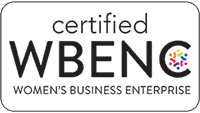In order for employee wellness programs to be effective, all employees must be able to participate. Making your wellness program accessible and providing accommodations for employees with disabilities not only helps with legal compliance, but also helps you reach the goals of your wellness program.
With some simple changes, you can make your wellness program more inclusive of all individuals, increasing participation and hopefully leading to a healthier, happier workforce. One of the ways you can create an inclusive employee wellness program is by implementing Barrier-Free Programming.
Our 10 best practices are effective tools we implement with our wellness solutions to ensure that companies have a successful employee wellness plan. We explored our eighth best practice, Barrier-Free Programming, to help demonstrate how you can properly build a thoughtful, long-lasting employee wellness program.
What is Barrier-Free Programming?
Barrier-Free Programming is when your employee wellness program offers a lot of flexibility in order to make it available and accessible for individuals with a wide range of abilities, needs, and circumstances.
This best practice helps all of your employees feel comfortable and welcomed, and will also encourage them to participate in the program. Providing a safe, inclusive community and accommodations will help improve your workplace culture and, in turn, positively impact employee productivity, retention, and motivation.
How to Integrate Barrier-Free Programming Into Your Wellness Plan
Here's how you can successfully implement Barrier-Free Programming within your own employee wellness program. Following our best practices, your Barrier-Free Programming was developed correctly if...
—You offer a variety of programs that will ensure that all employees can fully participate, regardless of any disability or hardship.
—You offer alternative options for outcomes-based incentives (i.e., healthy values action plan).
—Basic accommodations for diversity and limitations of workforce are provided.
—Materials are written in an appropriate reading level.
—Electronic assistance is provided (email or phone) for participants.
—Programs are achievable.
—You offer assistance virtually (i.e., Zoom/Teams, recorded meetings or videos).
—Wellness committee and/or champions are a diverse representation of employees (i.e., participants & non-participants, different locations, shifts).
—Assistance is provided onsite or in-person (i.e., translator provided for programs, tech support).
—Programming provides custom accommodations for individuals with limitations, such as: custom challenge goals, translators, closed captioning and telephone interpreting for hearing impaired, and screen readers for visually impaired.
Next month, we'll break down our final two best practices in more detail — be sure to follow along and don't miss out on how you can invest in these wellness solutions to help your employees thrive!
Interested in learning more about implementing an employee wellness program at your company? Let us help guide you. At OnSite Wellness, employee health and wellness is our specialty.
We offer additional supporting services on top of our Best Practices. Incorporating an employee wellness program at your workplace can have massive benefits for your employees in tracking and managing a healthy lifestyle.
Let us help you reach your goals and set your employees up for success! Contact us today to get started.
-1.png?width=300&name=1127895_OSW%20Tagline%20Logo_081021%20(1)-1.png)


